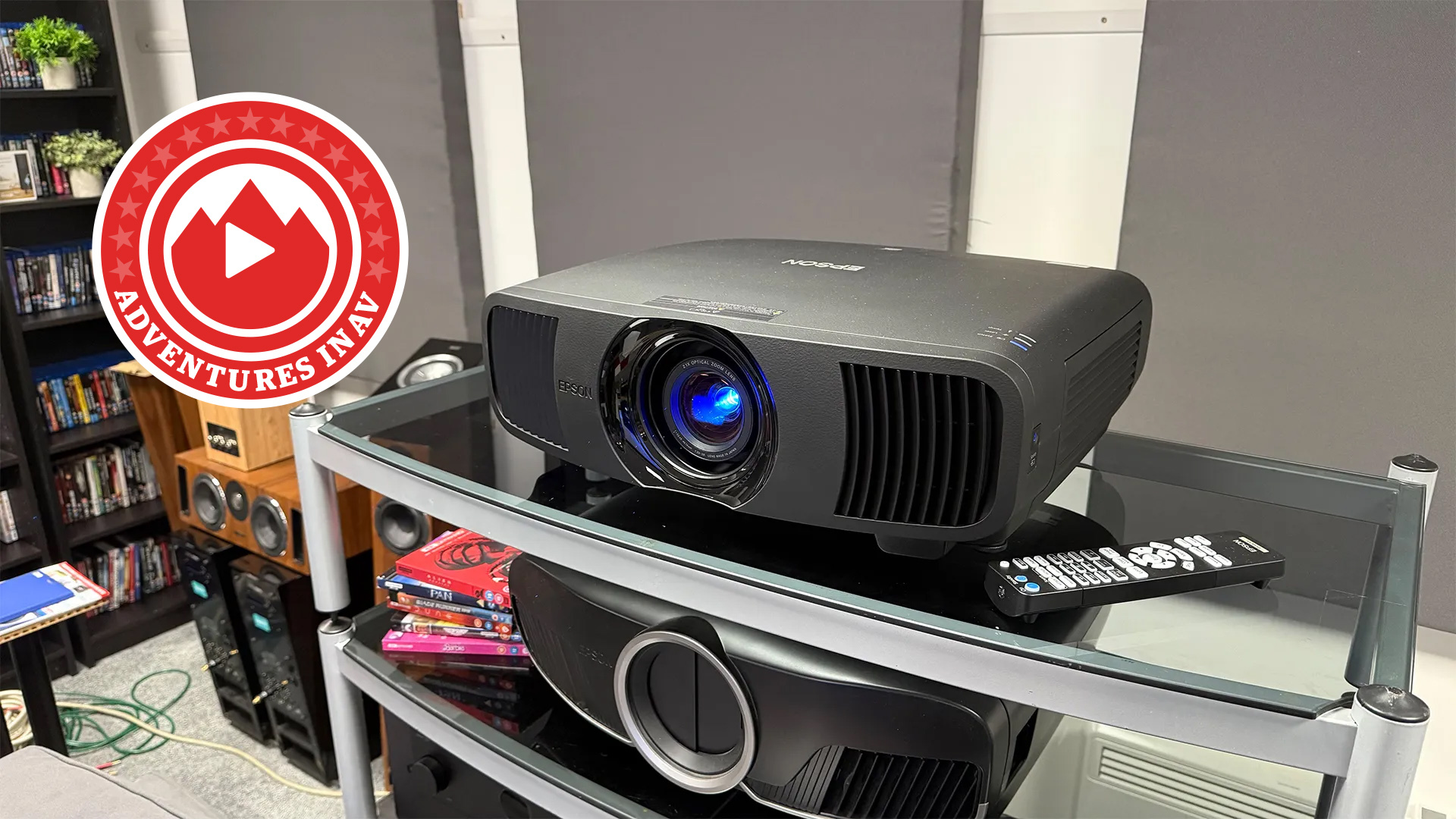Inside Sonos - on a mission to play all the music on earth

The Sonos Head Office is an exciting place to be. Not just because it’s in chic Santa Barbara, California, but because the company, famous for its wireless multi-room systems. is so busy thinking up new ways to fulfill its aim to ‘play all the music on earth’.
I talked with the design, technical and marketing teams about potential developments as diverse as battery-driven Sonos players and high-resolution music (both theoretically supportable but neither on the agenda just yet), plus the realities of software-driven sound, and some super-secret plans that – sadly – we can’t reveal right now.
What I can offer is some insight into how Sonos goes about its business – a business that has doubled in size for the past two years, and which is aiming for a $250 million turnover this year.
Company culture
“A company created by music lovers, for music lovers,” is how Sonos describes itself in its recruitment adverts (the firm has 360 employees worldwide, but is currently “hiring like crazy”).
There’s plenty of evidence around both the company’s office and tech labs to support that statement, too: from the sheer amount of music being played around the place (you’d be amazed how little you hear in some audio companies) to the passionate allegiance to a diverse array of artists displayed in employees’ offices and cubicles.
If it wasn’t for the large amount of branded products and literature around, a visitor to the Santa Barbara offices – centred around a converted school building (pictured below) – could mistake it for the home of a record company, music magazine or radio station.
The latest hi-fi, home cinema and tech news, reviews, buying advice and deals, direct to your inbox.
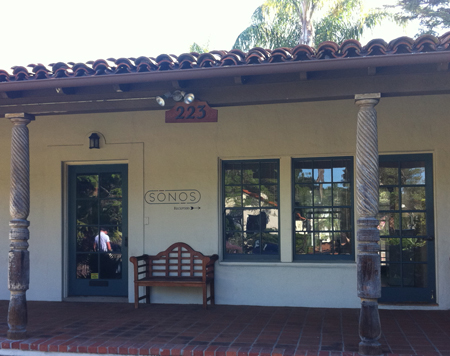
Stopping for a quick look at the Sonos customer-support team at work – the recent US launch of Spotify seemed to be a popular topic – I moved on to meet Rob Lambourne, the company’s ‘Director, User Experience’.
How Sonos designs its products
Lambourne (a fellow Brit; previously at Philips) is in charge of design for Sonos hardware and software, but his job title is a deliberate remove from the ‘Chief Designer’ tag you’d expect.
“Before we even begin to design anything, we do a lot of work upfront about who our customers are, how they interact with music throughout their day and what they want from our products,” he explains.
“That means that rather than designing something an engineer wants, we’re working on what users want. It lets us simplify designs and focus on everyday use,” Lambourne continues.
I point out that the company now has many different types of customer – how does Sonos deal with meeting potentially conflicting needs?
“At the end of the day we err on the side of simplicity,” he says. This was the thinking, he adds, behind omitting a line input on the new Sonos Play:3 – “most people weren’t going to use it”.
Further research – including home visits to Sonos users – led to users being able to turn off the Play:3’s display, so its light wouldn’t bother people using one in the bedroom.
As the company expands globally, Lambourne and his team also have to deal with a whole new set of user needs and expectations – starting with linguistics.
“We supported five languages, but now we’re adding more. Then there’s understanding different cultural perspectives – China and Japan are obviously different to US and Europe. For example, we called the Sonos S5 (now the Play:5) small – they thought it was big. That’s just one reason for the Play:3, plus its capability to be wall-mounted”.
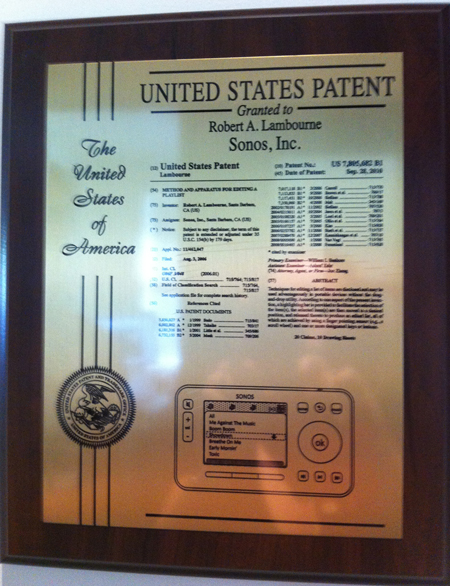
How much music do Sonos users stream?
Sonos’ research reveals that owners of its kit stream five times as much music from online services such as Spotify and Napster as they do from their own libraries of tunes.
Lambourne expects that trend to continue as online services develop and diversify: “There’s still lots of change and innovation in music services around the world. We’re working with Spotify and many others to ensure they’re also delivering things our customers need; that the joint experience is good”.
Patents for some of his designs hang on the office walls (see above), but when I ask what he’s most proud of creating at Sonos, it’s usability he singles out. “The seamless room-linking” he says. “Not having to restart music to bring another room in.”
Time to music
The user experience is also a key focus for Joni Hoadley, Sonos’ software product manager. She’s spent 15 years in product management, the past five working at Sonos.
She says the very initial Sonos experience – how long it takes a new user to get up and running with the kit – is a critical consideration.
“We refer to the ‘Time to Music’ – we want people to be enjoying music in less than 10 minutes. So, when we add new software features, we make sure they don’t get in the way – we actually calculate how many seconds something extra could add to that Time to Music.”
Software-defined sound
But Hoadley’s work doesn’t just address the product interfaces and (latterly) controller apps, as you’d expect, but the very sound of the kit itself.
“So much of our products are based on what you can do with software, “ she says. “Great hardware’s just the start.”
Hoadley explains that Sonos experiments with different software EQs to achieve different sounds, then tries the results out with a wide range of listeners – from professionals such as legendary producer Rick Rubin to customer beta testers.
“We could have added pre-set EQs to our players, but we’ve attempted to find the one sound that works for everybody; we’ve spent a lot of time testing and validating that sound,” she says.
The Play:5 (previously known as the S5) was the first to define that ‘Sonos sound’, Hoadley says, with the Play:3 following suit. Interestingly, she says that early betas featured studio-monitor-style sound, but tester feedback was that it was too flat, or sterile; users preferred a more lively sound.
Listening to a lot of types of music is key to the testing, she believes: “We’ve tried to achieve the best sound quality regardless of what’s being listened to – not just different genres of music, but the way it’s being delivered”.
'Look Ahead' technology
This latter point is further illustrated by Chris Kallai, director of engineering project management – and manager of acoustics – at Sonos. He explains that when you’re running a music playlist – either from your own collection or from a music service – your Sonos kit is using ‘Look Ahead’ technology to analyse what’s coming next.
“The software is making sure the music isn’t going to push the product beyond its capability, so that – for example – sound doesn’t get distorted. It knows all the sample rates and formats of all the different music services, knows which volume you’re running at, and automatically adjusts accordingly to ensure the best-possible sound,” Kallai says.
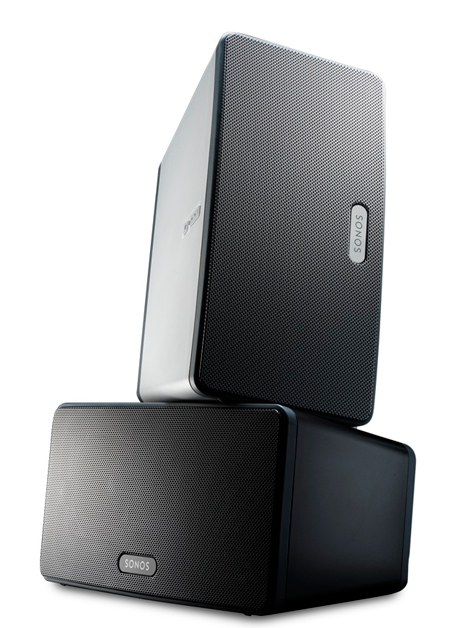
Another automatic audio adjustment that he and his team are proud of is the one that happens when the new Sonos Play:3. (above) is used in different configurations.
Depending on whether it’s positioned horizontally or vertically, the size of the soundstage alters, plus the mono/stereo delivery (there’s no point offering a ‘left-to-right’ stereo sound when a speaker is placed vertically, for example).
Inside the Sonos labs
Kallai gave me a tour around the Sonos labs, which have been open for about a year, joining the company’s larger tech centre in Cambridge, Massachusetts.
About eight blocks away from the head office (staff use a fleet of company bikes to shuttle between buildings), the labs are enviably positioned opposite a local brewery and winery.
Despite the great location – and a similar, music-oriented vibe to the main office – there’s some serious work going on inside, on hardware, software and support issues.
As Kallai explains: “We design everything ourselves, even power supplies – we have people with PhDs in power management!” (Incidentally, he didn’t rule out the potential for battery-powered Sonos players one day, though not imminently.)
He continues: “Sonos products are essentially like little computers, and we try and make as much as possible software- rather than hardware-based. This means we can keep making our products fresh – adding new features – even when you’ve owned them for a few years”.
I can only speculate whether this software-upgradeable approach would potentially allow for future support of high-resolution (ie above CD quality) music files. It doesn’t appear on the current Sonos roadmap – but maybe that’s not such a surprise with it remaining a specialist niche right now; there are greater consumer-driven priorities.
The computer-style nature of Sonos products means each unit is gathering data on itself – even while it’s still being made on the production line. Sonos retains all that information, which it can cross-refer to the product’s unique serial number; should there be any issue either before or after a product is shipped, that history can be referenced.
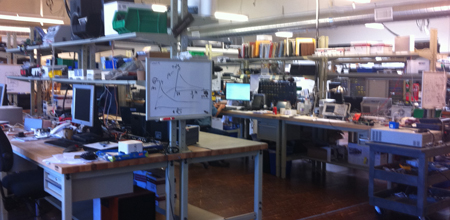
Sonos makes its products in China, but the hardware labs (pictured above) monitor the process closely, including having a mock-up of the production line, where it can identify any potential issues, should anything unusual emerge from the manufacturing data.
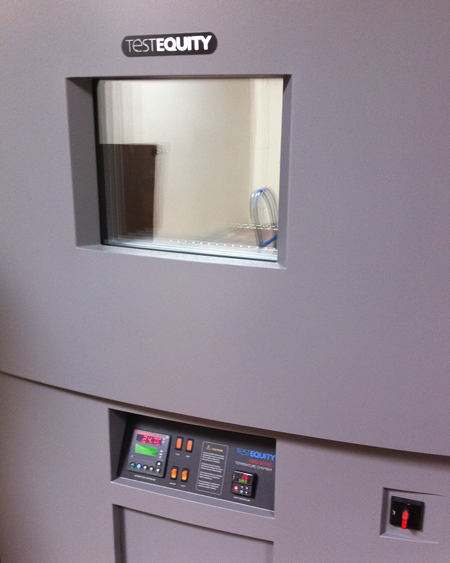
Otherwise, the hardware lab shares a lot of similarities with many audio companies, from the thermal testing machine (above) to the creative clutter of plans and parts. A quasi-anechoic chamber is under construction; it will be used for both product development plus long-term testing of existing lines when it comes online in late August.
Multi-platform, multi-zone testing
Next up was the QA (quality assurance) room, which follows a strict bug-filling process when problems are found at any stage of the software or hardware lifecycle.
For example, potential software developments are checked to see they’ll run smoothly on all existing Sonos hardware, including when running in full, 32-zone multi-room mode (you can see the 32-zone set-up on the far left of the picture below).
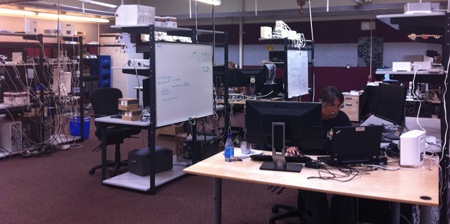
With the deployment of the recent Android controller app, Sonos has to check that any upgrades work across the range of devices that could run it – from smartphones to tablets.
The QA team also works proactively when it recognises other company’s software updates could impact Sonos users. For example, it soon became clear that the Sonos Controller for Mac (along with many other software applications) would have issues running under Mac OS X 10.7 (Lion). This information was relayed to the Sonos customer service team, who sent out emails to registered users advising them not to upgrade to Lion just yet.
What’s next for Sonos?
I saw some very interesting products in early stages of development in the Sonos labs, but non-disclosure agreements mean we can’t tell you any more. Indeed, some of these prototypes might never make it past the experimental stage, as Sonos founder and CEO, John MacFarlane, explains to me later.
“If we can’t make an outrageously good product, we won’t make it”, he insists, before telling me lots more juicy information I’d love to share with you – but sadly can’t. For now, at least…
What John will go on the record to stress is the design team’s earlier point about supporting emerging music-delivery mechanisms around the world as part of that lofty Sonos goal to ‘play all the music on earth’.
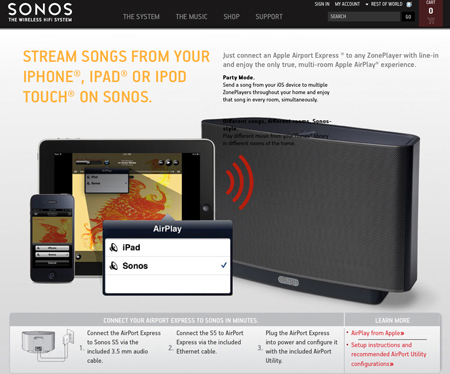
Future collaborations aren’t necessarily limited to just music services, either. Take, for example, the recent integration of support for Apple AirPlay, which many people see as a threat to Sonos, but which Sonos sees as just another opportunity – especially considering the exciting developments around more audio-centric apps, such as Bjork’s Biophilia.
As MacFarlane points out, many people thought Sonos was mad to offer a free iPhone Controller app when it sold a hardware controller itself, but the move – and the follow-up iPad and Android version – has brought the company a new audience.
Sonos has obviously come a long way from the 2002 start-up launched above a Mexican restaurant in Santa Barbara. But that original office (pictured below) is just around the corner from today’s $250m company, which – still privately owned – in turn hasn’t strayed far from MacFarlane’s original vision of cloud-based music.
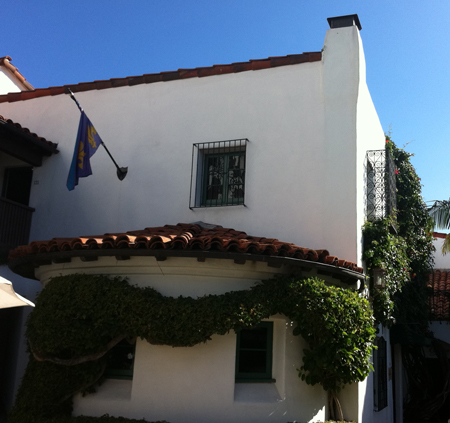
It’s going to be interesting to see how Sonos stays true to its core, small-company, music-focused roots as it develops further – starting with those new developments we’ll tell you about as soon as we can.
In the meantime, we remain impressed the Santa Barbara employess get so much done with distractions like these below mere minutes away from the day job. Maybe you get used to it after a while..

